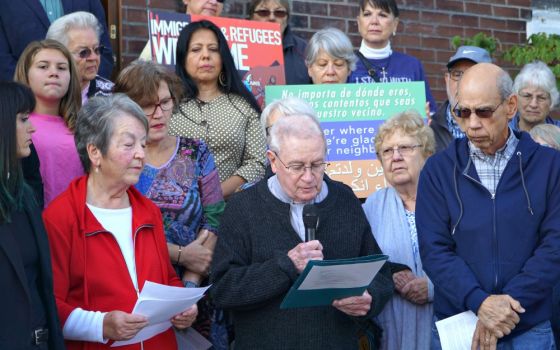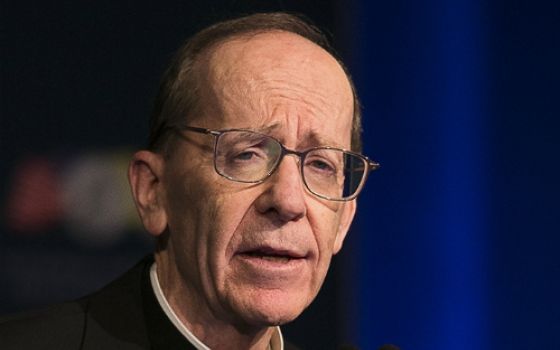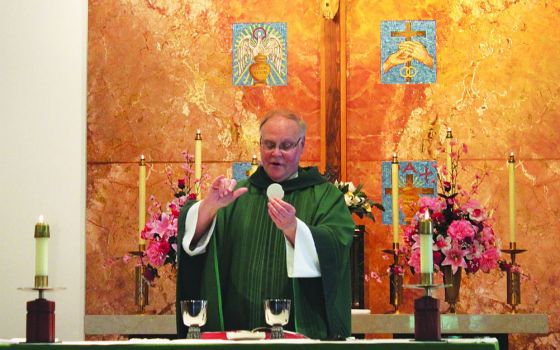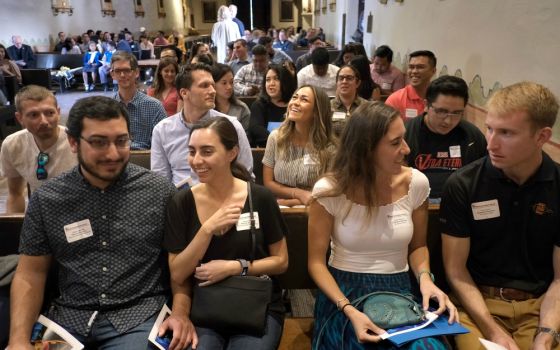Editor's note: "The Field Hospital" blog series covers life in U.S. and Canadian Catholic parishes. The title comes from Pope Francis' words: "I see the church as a field hospital after battle. It is useless to ask a seriously injured person if he has high cholesterol and about the level of his blood sugars! You have to heal his wounds. Then we can talk about everything else. …"
If you have a story suggestion, send it to Dan Morris-Young (dmyoung@ncronline.org) or Peter Feuerherd (pfeuerherd@ncronline.org).
There's a buzz in church administrative circles: yes, Latinos are the largest growing ethnic group -- in fact, the majority among young American Catholics -- and in many places, offering Mass in Spanish draws overflow crowds.
But don't expect all that much in the collection.
Joseph Citro, a senior vice president at Greater Mission, a fundraising for-profit company that works with dioceses and parishes, says the buzz is bogus. It just takes work to overcome.
Take a look at Our Lady of the Americas Parish in Lilburn, Ga., in the Atlanta archdiocese. In just the past decade, the parish has grown from 480 families to more than 7,000. It now has 900 baptisms a year and 2,000 children in religious education. There are 14,000 at weekend Masses, in a church that fits only 500. Most are Mexican immigrants.
The parish plans to construct a new multi-million dollar church and a parish center, largely paid for by its new members. It is now in the midst of a capital campaign.
Citro, a former social worker and Catholic Charities administrator and fundraiser for the Paterson, N.J., diocese, is fluent in Spanish. He has spent much of the past four years with Greater Mission dispelling the belief that Latino Catholics will not give to the church. He has also worked for dioceses in St. Petersburg and Venice, Fla.
If the church is to grow, it will need to flourish among the growing Latino population. That will mean increased fundraising among Latinos, both newly-arrived immigrants and those who have been here for generations, said Citro in a recent interview with NCR.
There are challenges. In many Latin American countries, there is little tradition of giving to the church by families of modest means. The church is frequently funded by wealthy local families or by the government. New immigrants need to know that the U.S. church operates under a different model, with parishes dependent largely on offertory collections.
A fallacy of some pastors with immigrant populations is the belief that Latinos have no money to give. Citro counters: In those communities, especially with those who have long-established businesses, there are Latino entrepreneurs and professionals who are in a position to give.
Across all ethnic groups there is a reality embraced by fundraising professionals. "The most common reason people give a gift is that they are asked," said Citro.
Among Latinos, said Citro, the way to ask is to connect with the strong family culture. In Lilburn, children were asked to do chores to raise funds, and they collected $8,000 for the building campaign.
Greater Mission, said Citro, has found results with similar campaigns in the past.
A parish in the Phoenix diocese was able to collect $2.3 million to build a needed new church, with Hispanics contributing $800,000, even though they are a minority of the parish.
Citro ties in the need to increase giving among Hispanic Catholics with their greater inclusion into the wider church and society.
"It's very clear that Hispanics will have more and more leadership," he said. Already, a third of the Catholics in the U.S. are Hispanic, and that number will only grow. Some 4,500 parishes in the U.S. have some kind of Latino ministry, about a quarter of all Catholic churches. They are emerging in states such as North Carolina, Georgia and Virginia, places where Latinos used to be rare.
Still, while a third of Catholics are Hispanic in the United States, and the country as a whole remains the second-largest Spanish-speaking nation, only six percent of priests know the language.
"We need to prepare our Hispanic population to take leadership. We don't have a long window," said Citro. He noted that Hispanic Catholic piety remains strong, even if there is a drop off in second-generation observance as assimilation into the wider culture occurs. Some 72 percent of Hispanics report that they pray to the Blessed Virgin for support during times of crisis. "It's a religiosity that permeates the entire culture," he said, noting that even evangelical churches working to gain Latino adherents will incorporate Our Lady of Guadalupe and other Marian devotions into their devotional life.
Hispanics and other Catholics often inhabit different neighborhoods and jobs. "There are not other venues when they come together," he said. "It's only in church where we are asking people to create a community. We have a unique role to play."
In a nation seen as increasingly divided over ethnic lines, and where there are more babies being born from minority groups than from white Americans, it's the Catholic church -- and the common collection basket -- that remains a vital link, said Citro.
[Peter Feuerherd is a correspondent for NCR's Field Hospital series on parish life and a professor of journalism at St. John's University, New York.]
We can send you an email alert every time The Field Hospital is posted. Go to this page and follow directions: Email alert sign-up.




